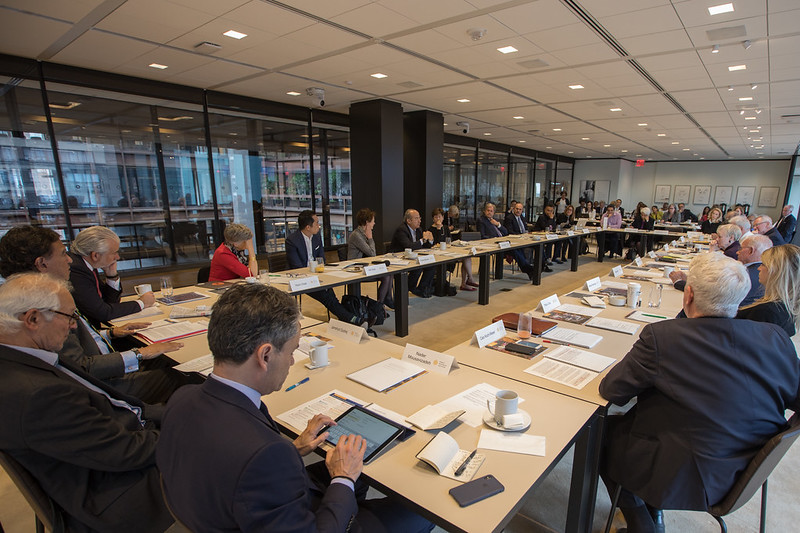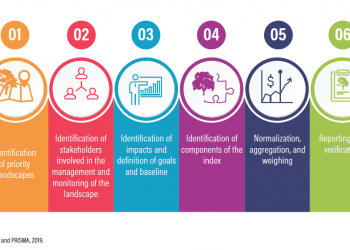In the midst of a global pandemic and economic recession, alarming indicators of climate change continue to mount. They underscore the urgent need for dramatic transformations in our global economy if we hope to stave off the worst impacts of climate change and realize a more resilient and just future. Public policy reforms will be key to this effort. But with the means to drive widespread business transformations, investors can play a key role in accelerating this transition. WRI is increasingly stepping up to this role through the management of its $40 million endowment.
In 2014, our Board of Directors committed to integrating environmental, social and governance (ESG) considerations across the WRI portfolio, making sustainability central to how we invest these funds. Since then, we have worked to continuously strengthen the rigor of this approach. We’ve done so without compromising performance — in fact, our strategy has helped enhance our risk-adjusted returns. But it has not come without challenges. The field of sustainable investing is complex and rapidly evolving, and there are limited examples to help translate the theory into practice. This is where peer-to-peer learning can add tremendous value and why we feel compelled to share lessons from our experience — the latest of which comes from our efforts on climate change.
Diving Deeper into Climate-related Issues
Addressing climate change has been an important part of WRI’s sustainable investment approach since the beginning. We’ve made substantial progress on this front: favoring investments in clean technology, increasing allocation to impact investments that provide solutions to sustainability challenges and engaging with companies as an active participant in the Climate Action 100+ initiative. But our broad ESG focus had its limitations. This became especially clear after we learned that a couple of the ESG products in our portfolio had higher emissions intensity levels than their benchmarks. While we were able to address that issue, the finding revealed how our approach did not allow us to drive change to the degree needed, or account for the varied set of cross-cutting risks and opportunities that climate change presents. Given the magnitude of the climate challenge, we saw a need to further refine and strengthen our climate approach in our portfolio.
This summer, WRI’s investment committee approved a new Climate Change Investment Statement (CCIS), elaborating on how WRI integrates climate-related factors into its endowment portfolio. At the heart of the statement is a goal to align WRI’s endowment with the Paris Agreement. To advance this goal, we have committed to transition the portfolio to net-zero GHG emissions by 2050 and to prioritize investments that support a just and resilient transition. The statement lays out a high-level plan to achieve these commitments, which involves setting specific and measurable 5-year targets and following a set of concrete objectives and activities that steer the portfolio toward Paris alignment.
Instead of incorporating climate change into our standing Investment Policy Statement (IPS), WRI opted to develop a stand-alone statement in accordance with existing guidance from investor networks. This gave us the room to systematically work through issues raised by the Task Force on Climate-related Financial Disclosures (TCFD) as well as other key questions we felt compelled to raise. Ultimately, it allowed us to introduce new rigor and comprehensiveness to our approach.
Our experience creating the statement was filled with discovery, and we’re eager to share lessons with and learn from the many other asset owners who are working toward a similar goal. In addition to sharing the full statement on our website, we offer four considerations that can help asset owners who are weighing a climate investment strategy.
1. Beginning with Evidenced-based Investment Beliefs.
Investment beliefs outline an asset owner’s understanding of the investment context and help set the direction for the investment strategy and its implementation. Underpinning our investment strategy is our understanding that climate change is the most urgent global challenge of our time. As scientists and contemporary events warn us of the impacts of climate change, sustainability is becoming an important driver of economic growth. In this context, an investment strategy that carefully manages climate-related issues can help mitigate risks and deliver superior returns over time — while contributing to climate solutions. Outlining our understanding of climate change and how it shapes investment helped us craft a strategy to systematically address the issue in our own portfolio. We drew from the latest research on climate science, socioeconomic development, sustainable investing and climate-related risk assessment to construct a solid picture of how climate change is shaping the investment context. We then considered the implications for our portfolio and identified areas where our existing strategy did not best equip us to navigate an uncertain future. We designed the climate strategy to strengthen our approach on these fronts. For fiduciaries who aren’t yet convinced of the case for tackling climate change in their portfolio, the investment beliefs detailed in our CCIS can provide a helpful lens for consideration.
2. Setting a Clear North Star.
Our climate strategy is designed around two investment objectives: alignment with the Paris goals and achieving competitive, risk-adjusted returns. We see the two as intertwined, and in fact, we expect a holistic approach to Paris alignment will actually enhance our risk-adjusted returns. But how we realize our investment vision will be an iterative process, and the path forward is far from clear. Fortunately, a number of efforts have emerged to help guide investors in this undertaking, including the Paris Aligned Investment Initiative, the Science Based Targets Initiative and the Net Zero Asset Owner Alliance. While we have mapped out our initial plan, we know we have much to learn from these evolving initiatives and may need to make adjustments along the way.
3. Embracing a Holistic Interpretation of Paris Alignment.
Although the Paris Agreement’s goal to limit temperature rise to 1.5 degrees C has received the most attention from investors, its goal around adaptation, resilience and low-emissions development is also critical. The events of this year — including massive social uprisings for racial justice — speak to the acute need for climate action that goes beyond decarbonization to advance environmental justice and enhance resilience for frontline communities. This introduces a new layer of complexity to our approach since issues like social equity are harder to translate into an investment context than something like carbon emissions, which are more easily quantified. But these challenges are no less urgent to solve and no less important in achieving the goals of the Paris Agreement, so we will seek to address them within the specific objectives in our strategy. It’s likely that our approach to portfolio emissions reduction will be more sophisticated at the outset, thanks to available quantitative data and methodologies. But we nevertheless will continue to push forward on resilience and justice issues in our portfolio, knowing we will learn and improve as we go.
4. Striving To Be as Concrete as Possible, but the Real Work Lies Ahead.
As an asset owner, we know firsthand how helpful a detailed investment framework or strategy can be — as a resource to others, as a guide for investment advisors and as a tool for accountability. With this in mind, our strategy section outlines five objectives designed to steer the investment portfolio toward our Paris alignment goal, each with a set of timebound activities to guide implementation.
The two objectives that relate to asset allocation include the quantitative portfolio targets already in effect: maintain 0% exposure to fossil fuel companies and commit 15% of the portfolio to low-carbon, climate-resilient and sustainable development-aligned private market investments by 2022. We’ve already achieved the former, having divested our small remaining fossil fuel holdings in April of this year. Consistent with our climate investment beliefs, our near-term financial analysis of the holdings suggested that this step towards Paris alignment is in our financial interest as well.
Over the next year, we will work to set additional quantitative targets related to decarbonization and advancing a just, resilient transition. For example, for our emissions reductions targets, the first step will be to apply the Science Based Target temperature scoring tool to our portfolio_._ From there we will determine five-year targets that put our portfolio on a path that aligns with the temperature goals of the Paris Agreement. Ironing out the details for these and other targets will be the crux of achieving our climate goals, so this is where the real work begins.
Forging Ahead, in Good Company
Taking the next step of implementing our climate investment strategy — doing the work to align our endowment with the Paris Agreement goals — will be a humbling process. We know full well that the specifics of the plan may change, particularly as knowledge, resources and investment options evolve. But at the same time, we acknowledge that we are neither starting from scratch with our portfolio nor going at it alone. We will draw from — and contribute to — the growing body of knowledge and resources on Paris-aligned investing, developed by a highly active and collaborative community of practice. As we begin this next chapter of our journey, we look forward to sharing more lessons along the way.



